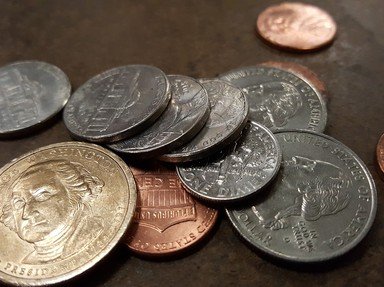Quiz Answer Key and Fun Facts
1. What was the first US nickel design?
2. What is the rarest US nickel ever minted?
3. Who was the designer of the Bison nickel?
4. What appears on the obverse of the Buffalo nickel?
5. What year was the Jefferson nickel first minted?
6. What is the silver content of a US wartime alloy nickel?
7. A Bison appears on more than one different US nickel designs.
8. A nickel composed entirely of copper has been minted.
9. How many different designs of Westward Journey nickel were minted?
10. The word "nickel" appears on all US nickels.
Source: Author
C35PYRO
This quiz was reviewed by FunTrivia editor
WesleyCrusher before going online.
Any errors found in FunTrivia content are routinely corrected through our feedback system.

